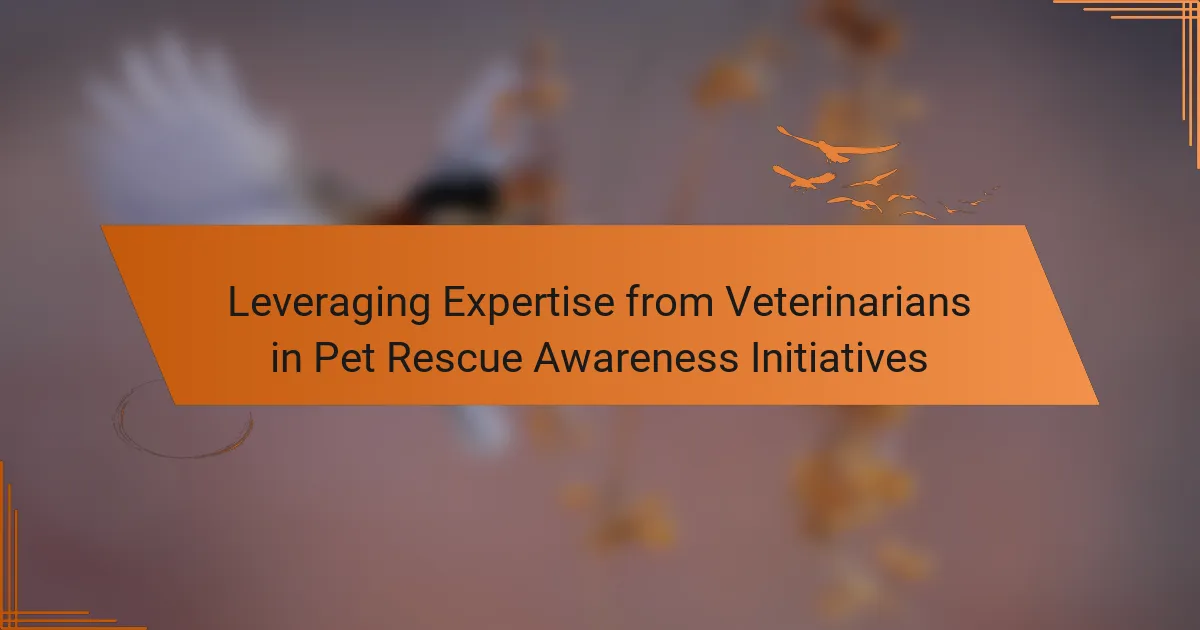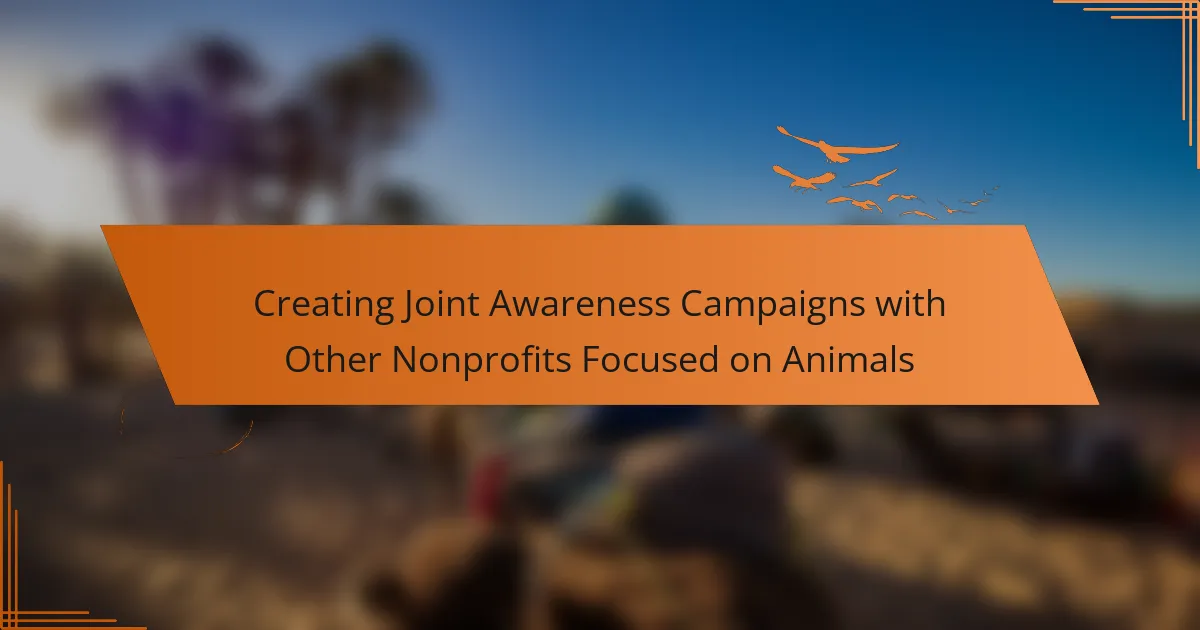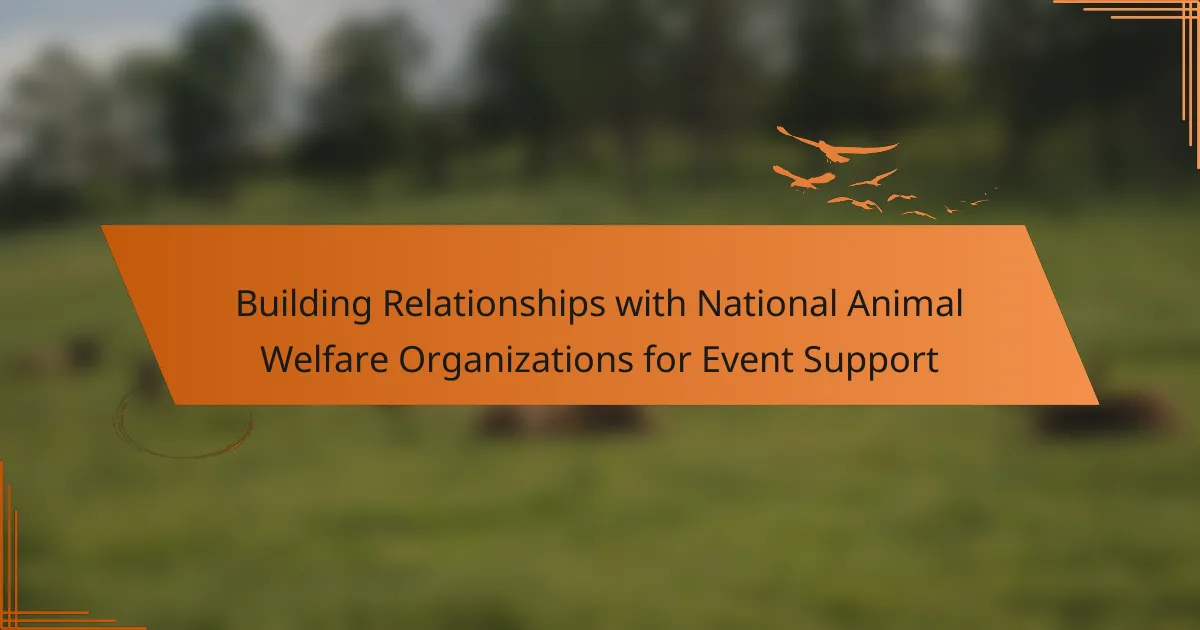Veterinarians are pivotal in enhancing pet rescue awareness in the United States, utilizing their expertise and the trust they have built within communities. By engaging in education and outreach, they can effectively communicate the significance of pet adoption and the responsibilities that come with pet ownership, ultimately fostering a culture of compassion and care for animals in need.
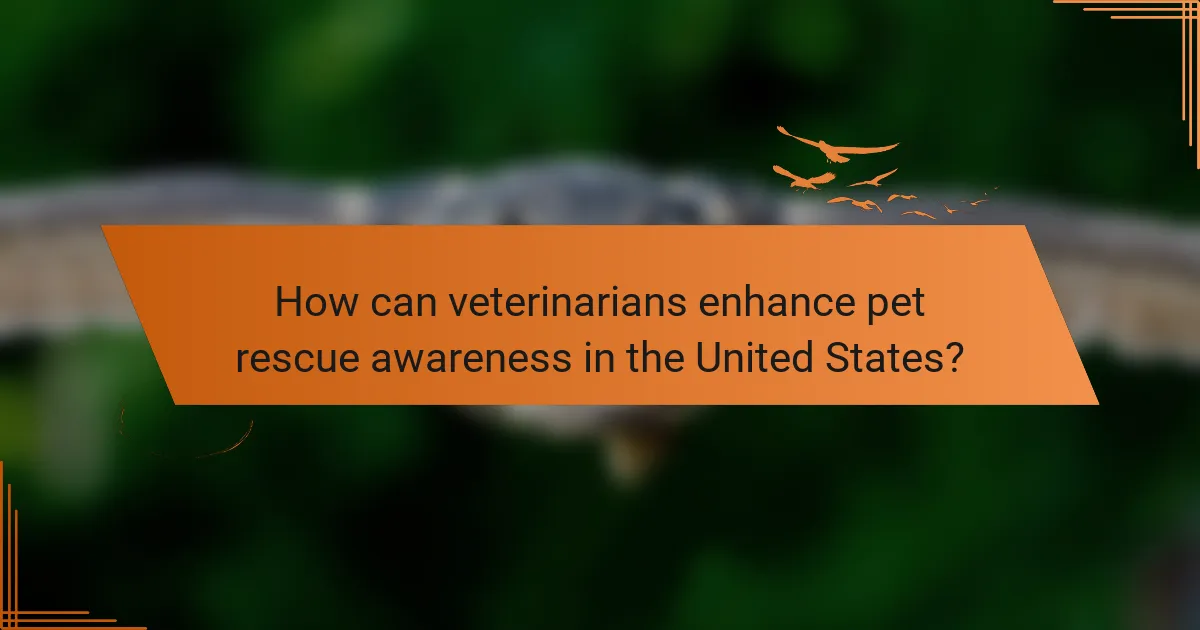
How can veterinarians enhance pet rescue awareness in the United States?
Veterinarians can significantly boost pet rescue awareness in the United States by leveraging their expertise and community trust. Through education, collaboration, and outreach, they can inform the public about the importance of pet adoption and responsible pet ownership.
Veterinary-led community workshops
Veterinary-led community workshops provide an excellent platform for educating pet owners about rescue initiatives. These workshops can cover topics such as the benefits of adopting pets, responsible pet care, and the importance of spaying and neutering. Engaging presentations can draw in local residents and create a supportive environment for discussions.
To maximize impact, veterinarians should consider offering hands-on demonstrations, Q&A sessions, and distributing informative materials. Scheduling these workshops at local events or community centers can increase attendance and foster a sense of community involvement.
Partnerships with local shelters
Forming partnerships with local shelters allows veterinarians to directly support pet rescue efforts. By collaborating on events such as adoption days or vaccination clinics, veterinarians can help increase the visibility of available pets and encourage adoptions. These partnerships can also facilitate the sharing of resources and expertise.
Additionally, veterinarians can assist shelters by providing educational resources on pet care and health, which can improve the overall well-being of animals in their care. Regular communication between veterinarians and shelters ensures that both parties are aligned in their mission to promote pet adoption.
Social media campaigns
Social media campaigns are a powerful tool for veterinarians to raise awareness about pet rescue initiatives. By sharing success stories, educational content, and information about adoptable pets, veterinarians can reach a wider audience and inspire action. Engaging visuals and compelling narratives can capture attention and encourage shares.
Veterinarians should utilize various platforms, such as Facebook, Instagram, and Twitter, to maximize their outreach. Creating a consistent posting schedule and using relevant hashtags can enhance visibility. Collaborating with influencers or local businesses can further amplify the message and foster community engagement.
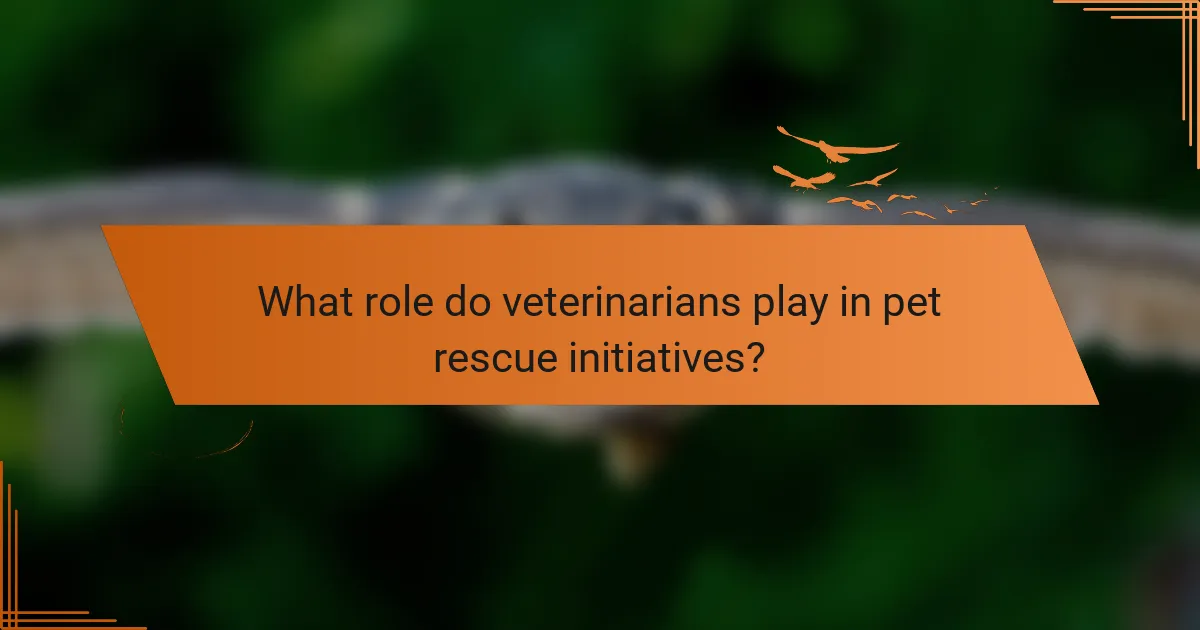
What role do veterinarians play in pet rescue initiatives?
Veterinarians play a crucial role in pet rescue initiatives by providing essential medical care and promoting awareness about pet adoption. Their expertise ensures that rescued animals receive proper treatment and that potential adopters are informed about the responsibilities of pet ownership.
Providing medical care for rescued animals
Veterinarians are vital in assessing the health of rescued animals, diagnosing illnesses, and administering necessary treatments. This can include vaccinations, spaying or neutering, and addressing any injuries or chronic conditions. Ensuring animals are healthy before adoption increases their chances of finding a permanent home.
Many rescue organizations collaborate with local veterinarians to establish low-cost clinics or vaccination drives, making it easier for shelters to provide care. This partnership helps manage the costs associated with veterinary services, which can be significant, often ranging from hundreds to thousands of dollars per animal depending on the treatment required.
Educating the public on pet adoption
Veterinarians serve as key educators in promoting pet adoption by sharing information about the benefits of adopting over buying pets. They can highlight the importance of choosing to adopt from shelters, which often have a variety of animals in need of homes. This education can take place through community events, social media campaigns, or informational sessions at local shelters.
Additionally, veterinarians can provide guidance on the responsibilities of pet ownership, including regular veterinary care, proper nutrition, and training. By addressing common misconceptions and providing practical advice, they help potential adopters make informed decisions, ultimately leading to successful adoptions and reduced rates of pet abandonment.

What are effective strategies for veterinarians to promote pet adoption?
Veterinarians can effectively promote pet adoption by engaging in community outreach and providing valuable services that support new pet owners. By leveraging their expertise, they can raise awareness and encourage responsible pet ownership.
Hosting adoption events
Hosting adoption events allows veterinarians to connect directly with potential pet adopters while showcasing animals in need of homes. These events can be organized in collaboration with local shelters and rescue organizations, creating a festive atmosphere that attracts families and individuals.
Consider scheduling these events on weekends or during community festivals to maximize attendance. Providing free consultations or pet care workshops during the event can further engage attendees and highlight the importance of responsible pet ownership.
Offering discounted services for adopted pets
Veterinarians can encourage pet adoption by offering discounted services for newly adopted animals. This can include reduced rates for vaccinations, spaying/neutering, and wellness check-ups, making it more affordable for new pet owners to provide necessary care.
Promoting these discounts through local shelters and adoption events can enhance visibility. Additionally, consider creating a loyalty program that rewards pet owners with further discounts after their first visit, fostering long-term relationships and encouraging regular veterinary care.

How can veterinarians collaborate with pet rescue organizations?
Veterinarians can collaborate with pet rescue organizations by sharing their expertise, resources, and networks to enhance awareness and support for animal welfare. This partnership can lead to improved care for rescued animals and increased community engagement in rescue initiatives.
Shared resources and knowledge
Veterinarians can provide valuable knowledge on animal health, behavior, and welfare, which is crucial for rescue organizations. By offering training sessions or workshops, vets can educate volunteers on proper care techniques, disease prevention, and behavioral assessments.
Additionally, sharing resources such as medical supplies, facilities for temporary housing, or access to veterinary services can significantly enhance the operational capacity of rescue groups. For instance, a vet clinic might host a monthly vaccination clinic for rescued pets, ensuring they receive essential medical care.
Joint fundraising efforts
Collaborating on fundraising initiatives allows veterinarians and rescue organizations to pool their resources and reach a broader audience. Joint events, such as charity walks or adoption fairs, can attract more participants and raise significant funds for both parties.
Utilizing social media platforms for joint campaigns can also amplify their message and increase donations. For example, a veterinarian might promote a special discount on services for pets adopted from a partner rescue organization, with a portion of the proceeds going directly to the rescue.
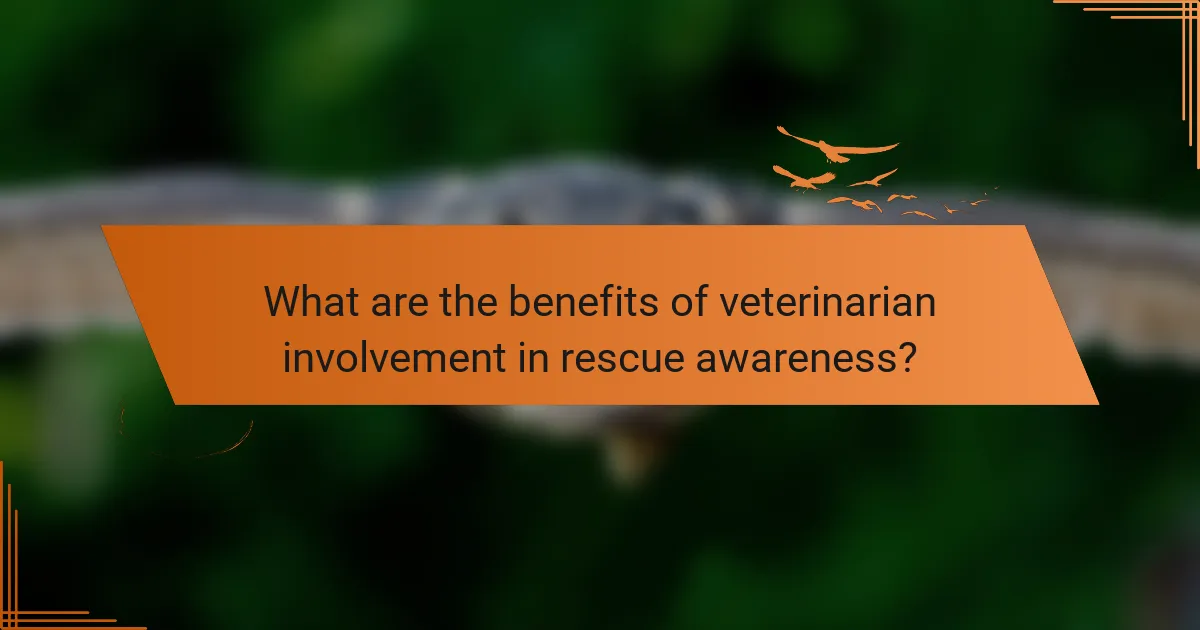
What are the benefits of veterinarian involvement in rescue awareness?
Veterinarian involvement in rescue awareness initiatives enhances community engagement and promotes responsible pet ownership. Their expertise helps educate the public on animal care, leading to better outcomes for pets in need of rescue.
Increased community trust
When veterinarians participate in rescue awareness, they lend credibility to the initiatives, fostering trust within the community. Their professional insights reassure pet owners about the importance of spaying, neutering, and regular veterinary care.
For example, local veterinarians can host workshops or informational sessions that address common misconceptions about rescue animals. This direct interaction helps build a rapport between the community and animal welfare organizations.
Improved animal welfare outcomes
Veterinarian involvement directly contributes to better animal welfare by promoting health screenings and vaccinations for rescued pets. Their expertise ensures that animals receive necessary medical attention before adoption, increasing the chances of successful placements.
Additionally, veterinarians can help establish best practices for shelters, such as implementing proper nutrition and socialization techniques. This proactive approach not only enhances the quality of life for animals in rescue but also encourages potential adopters to consider these pets.
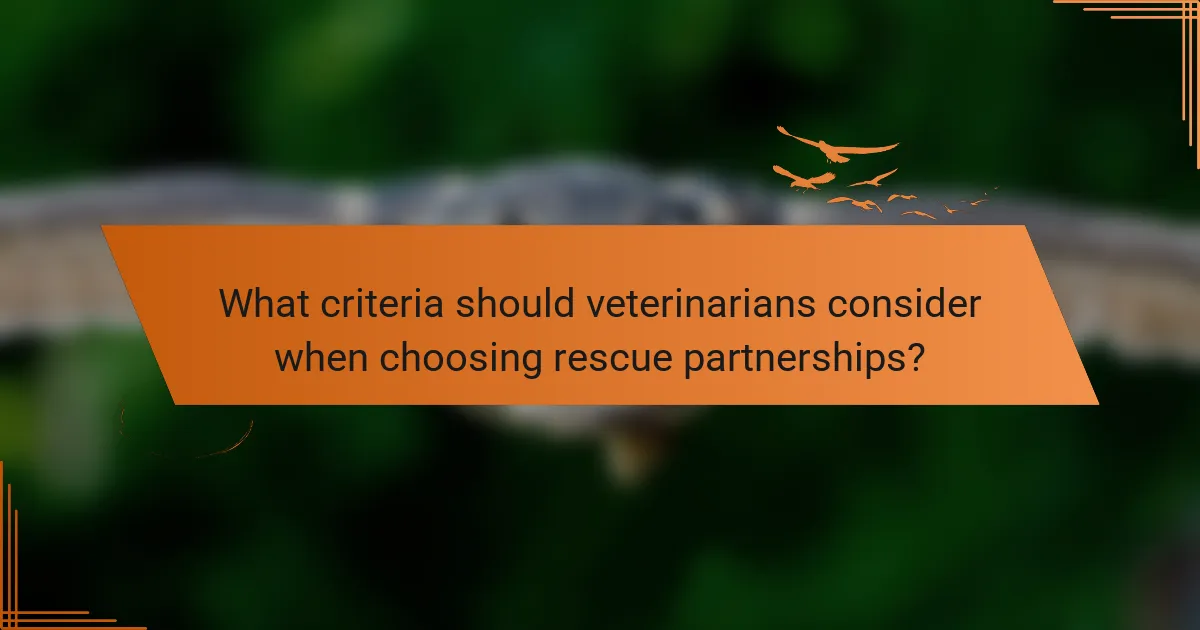
What criteria should veterinarians consider when choosing rescue partnerships?
Veterinarians should evaluate several key criteria when selecting rescue partnerships, including the reputation of the organization and the alignment of its mission and values with their own. These factors ensure that the collaboration is beneficial for both the animals and the community.
Reputation of the rescue organization
The reputation of a rescue organization is crucial for veterinarians. A well-regarded rescue typically has a track record of successful adoptions, positive community feedback, and transparent operations. Veterinarians can assess reputation by reviewing online testimonials, checking social media presence, and speaking with other professionals in the field.
Additionally, it is helpful to inquire about the organization’s compliance with local animal welfare regulations and any certifications it may hold. A reputable rescue will often have partnerships with local veterinary clinics and animal control agencies, indicating a collaborative approach to animal care.
Alignment of mission and values
Veterinarians should ensure that the mission and values of the rescue organization align with their own professional ethics and goals. This alignment fosters a more cohesive partnership and enhances the effectiveness of rescue efforts. For example, if a veterinarian prioritizes spaying and neutering to control pet populations, they should partner with rescues that share this commitment.
To evaluate alignment, veterinarians can review the rescue’s mission statement, operational practices, and community engagement strategies. Engaging in discussions with the organization’s leadership can also provide insight into their values and long-term vision for animal welfare.
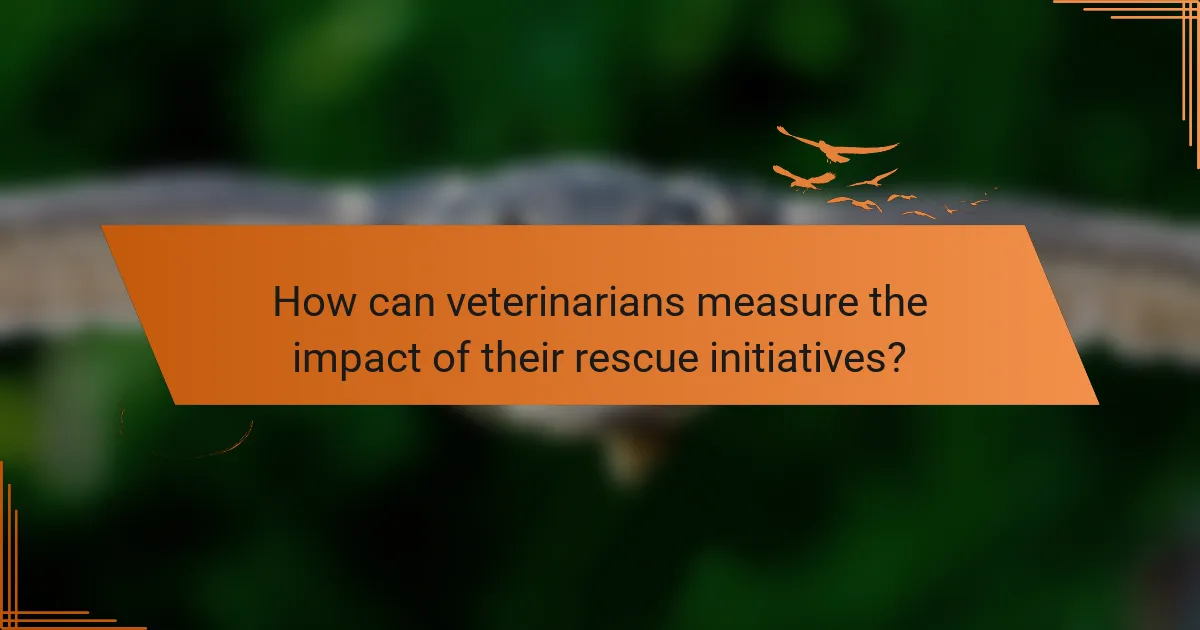
How can veterinarians measure the impact of their rescue initiatives?
Veterinarians can measure the impact of their rescue initiatives by analyzing key metrics such as adoption rates and health outcomes of the pets they help. These metrics provide insights into the effectiveness of their efforts and guide future rescue strategies.
Tracking adoption rates
Tracking adoption rates involves collecting data on how many rescued pets find permanent homes. This can be done through collaboration with local shelters and adoption events, where veterinarians can record the number of animals adopted over specific periods.
Veterinarians should aim to monitor trends in adoption rates, such as increases during certain seasons or following specific campaigns. Regularly reviewing this data helps identify successful strategies and areas needing improvement.
Monitoring health outcomes of rescued pets
Monitoring health outcomes requires veterinarians to assess the physical and behavioral health of rescued pets before and after adoption. This includes tracking vaccinations, spaying/neutering rates, and any medical treatments provided.
Veterinarians can establish a follow-up system to check on pets after adoption, ensuring they receive necessary care. This not only helps in evaluating the success of rescue initiatives but also strengthens relationships with pet owners, fostering a community of responsible pet care.

What emerging trends are shaping veterinarian involvement in pet rescue?
Veterinarians are increasingly engaging in pet rescue initiatives through innovative practices that enhance animal welfare and community outreach. Key trends include the use of telemedicine, collaborative partnerships, and educational programs aimed at raising awareness about pet adoption and care.
Telemedicine for rescue organizations
Telemedicine is transforming how rescue organizations access veterinary care, allowing for remote consultations and diagnostics. This approach can significantly reduce costs and improve access to veterinary expertise, especially in underserved areas.
Rescue groups can utilize telemedicine platforms to connect with veterinarians for advice on treatment plans, behavioral assessments, and post-adoption care. This can streamline operations and ensure that animals receive timely medical attention without the need for physical transport.
When implementing telemedicine, organizations should ensure compliance with local regulations regarding veterinary practices. They should also choose platforms that offer secure communication and maintain accurate medical records for each animal.
